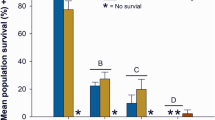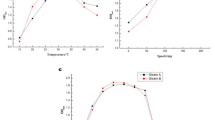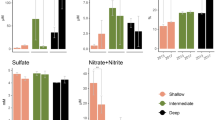Abstract
THE remarkably high salt tolerance of unicellular organisms, which have been found in a saline lake of salt concentration so high as 19–26 per cent sodium chloride by Ruben Tschik, T. Hof, Baas-Becking and others, caused us to doubt the accuracy of the reputation of lifelessness, which tradition imputes to the Dead Sea. Accordingly, samples of Dead Sea water were taken under sterile conditions at a distance of 3–4 km. from the mouth of the Jordan at various sea depths up to 7 metres. The total salt concentration of the water samples was 28–29 per cent. Bacterial organisms could be grown in 1 per cent peptone sample water media at temperatures of 21°–23° C. and 30° C. from all the samples taken.
This is a preview of subscription content, access via your institution
Access options
Subscribe to this journal
Receive 51 print issues and online access
$199.00 per year
only $3.90 per issue
Buy this article
- Purchase on SpringerLink
- Instant access to full article PDF
Prices may be subject to local taxes which are calculated during checkout
Similar content being viewed by others
Author information
Authors and Affiliations
Rights and permissions
About this article
Cite this article
WILKANSKY, B. Life in the Dead Sea. Nature 138, 467 (1936). https://doi.org/10.1038/138467a0
Issue date:
DOI: https://doi.org/10.1038/138467a0
This article is cited by
-
Halophiles: biology, adaptation, and their role in decontamination of hypersaline environments
World Journal of Microbiology and Biotechnology (2016)
-
Endospores of halophilic bacteria of the family Bacillaceae isolated from non-saline Japanese soil may be transported by Kosa event (Asian dust storm)
Saline Systems (2005)




Grandma's Lucia Natural Soap
Helpful , Thanks.